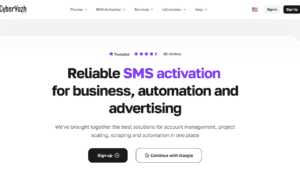According to Gartner, over 70 percent of organizations will deploy an MDM solution by 2025. As businesses grow digitally, managing iOS devices like iPhones and iPads is crucial for performance, security, and seamless integration. Robust MDM solutions are essential to ensure control, compliance, and data protection.
With the rise of remote work and BYOD policies, IT teams face challenges securing and managing diverse iOS devices while ensuring a smooth user experience. MDM for iOS provides businesses with the tools to monitor, secure, and manage Apple devices effectively.
Yet, now it’s relevant to take a closer look at some of the critical factors businesses should take into consideration while choosing an iOS MDM platform.
Key Considerations When Choosing an iOS MDM Solution
Selecting the proper organization of the iOS MDM solution goes beyond deciding whether to focus on device control. The primary idea is to realize the ideal, the sweet spot of security, compliance, and liberty. Whether your organization is implementing corporate policies, supporting remote technical assistance, or adhering to rigorous compliance requirements, there is an MDM solution that will enable your IT professionals to accomplish these tasks without a hitch.
Before diving into the top solutions, it’s essential to understand the key factors businesses should consider when selecting an MDM platform:
- Device Compatibility: Ensure the solution supports management across all Apple devices (iPhones, iPads, Macs) to maintain a unified approach.
- Visibility and Control: Look for real-time, actionable insights into device status, inventory, and usage to guide decisions.
- Security and Compliance: Prioritize solutions that offer robust security features like remote wipe, device locking, and passcode enforcement to protect company data.
- Simplified Onboarding: Check if the solution integrates with Apple’s Device Enrollment Program (DEP) to streamline device setup and reduce manual tasks.
- App Management Flexibility: Ensure the ability to lock devices into specific apps or use Kiosk Mode to prevent unauthorized access and maintain focus.
- Policy Customization: Consider a solution that allows you to apply detailed policies, tailored to different teams or departments for effective management.
- Automation Capabilities: Look for an MDM that supports task automation to simplify routine IT processes and improve efficiency.
- Kiosk Mode Flexibility: Ensure the solution offers customizable iPad Kiosk Modeoptions, allowing you to lock devices to a single app or a set of apps, ideal for specific use cases like retail, kiosks, or dedicated business applications.
Overview
Scalefusion combines UEM (Unified Endpoint Management), IAM (Identity and Access Management), and Endpoint Security, providing a comprehensive business solution for device management in one place. Unlike competitors focusing solely on MDM, Scalefusion offers IT directors complete oversight of their device environment, whether it is company-owned or part of a BYOD program. Its intuitive dashboard ensures a seamless experience with no complex IT skills required.
Key Features
- User-Friendly Dashboard and DeepDive: Simplifies device management, policy enforcement, and real-time monitoring.
- Zero-Touch Deployment: Integration with Apple Business Manager (ABM) ensures effortless onboarding.
- Remote Support Tools: Features like Remote access for mac, VoIP calls, and real-time troubleshooting reduce downtime.
- Advanced Security Measures: Includes geofencing, remote lock/wipe, automated compliance tracking, and content synchronization.
- Cross-Platform Support: Compatible with iOS, Android, Windows, macOS, and Linux.
Pricing
Scalefusion offers flexible and affordable pricing plans, making it a cost-effective solution for businesses of all sizes. Their free trial allows organizations to explore all of its features before committing to a subscription.
-
Jamf Pro
Overview
Jamf Pro is a comprehensive Apple device management solution designed to automate an organization’s entire lifecycle of Apple devices. It offers robust integration with Apple’s ecosystem, providing seamless management of devices, applications, and security policies. Organizations heavily invested in Apple products often choose Jamf Pro for its specialized features and capabilities.
Key Features:
- Zero-touch deployment: Jamf enables seamless device onboarding by automatically configuring and enrolling devices out of the box.
- Automated inventory collection: Jamf provides real-time insights into device details with its automated inventory tracking system.
- Integrated endpoint protection: Jamf ensures robust security by integrating advanced endpoint protection directly into its management solution.
- Visibility and compliance: Jamf helps businesses stay compliant by offering detailed monitoring and actionable compliance reporting.
- Endpoint protection: With Jamf, devices are protected against malware and cyber threats using advanced security tools.
-
Microsoft Intune
Overview
Microsoft Intune is a cloud-based device management solution tailored for organizations within the Microsoft ecosystem. It integrates with Azure Active Directory and Microsoft 365, offering security policy enforcement, compliance tracking, and access control across iOS, Android, and Windows devices. While Intune provides a broad feature set, it’s best suited for businesses already using Microsoft services.
Key Features
- Conditional access policies to restrict device access.
- Data loss prevention for securing corporate data.
- Essential device management, including remote wipe.
- Seamless integration with Microsoft services.
Pricing
Intune is included in various Microsoft 365 and EMS plans, with a free trial available for evaluation.
-
VMware Workspace ONE
Overview
VMware Workspace ONE is a digital workspace platform that combines access control, application management, and endpoint security under a Zero-Trust model. It ensures that only compliant devices access corporate resources, making it ideal for enterprises with complex IT environments.
Key Features
- Unified endpoint management for multiple device types.
- Zero Trust security framework for enhanced compliance.
- Application management to provide secure app access.
Pricing
Workspace ONE offers flexible pricing plans and a free business trial to explore its capabilities.
-
Cisco Meraki Systems Manager
Overview
Cisco Meraki Systems Manager provides cloud-based MDM focusing on scalability and ease of use. Its centralized dashboard offers IT teams an efficient way to manage security and compliance across all enrolled devices.
Key Features
- Cloud-based centralized device management.
- Easy device enrollment and configuration.
- Security policy enforcement and app management.
Pricing
Cisco Meraki offers flexible licensing plans with a free trial for potential customers.
The Future of iOS MDM Solutions
As companies require greater flexibility in their working arrangements with their employees in the future, MDM solutions will advance. Some of the eventualities of future predictions that may transform the iOS MDM market in society include artificial intelligence integration, improving security standards, and increasing employees’ privacy regarding company-owned gadgets for business operations. For any organization that deploys resources in a revolutionary way, the best iOS MDM solution will stand in the correct position to handle these ever-emerging issues.
Closing Statement
Choosing between the various MDM systems for iOS is essential for any company that desires efficiency in managing its secure business operations for mobile staff. Thus, each of the solutions presented has its advantages, but the most considerable advantage of Scalefusion was the optimal combination of price, solidity, and convenience. Regardless of the approach, whether BYOD or corporate-owned devices, proper MDM tool choice can create more significant efficiency gains and protect valuable data.
In conclusion, several factors can help identify which iOS MDM is best for a specific business: The implementation of all the solutions indicated in this paper is determined by the number of requisite devices, the corporation’s mobility priorities, and the IT infrastructure.



































